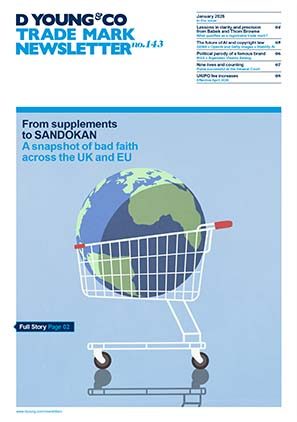VETSURE or PETSURE? A pet insurance providers' dogfight
In a recent ruling by the UK High Court involving the pet insurance brands VETSURE and PETSURE, deputy judge Mr Ian Karet highlighted the narrow scope of protection for descriptive trade marks in competitive business sectors, such as the insurance industry, and the pivotal role of consumer perception in the context of infringement proceedings.
Background
TVIS Limited, the claimant in this case, has been operating under the VETSURE brand since 2009, providing pet insurance services. The VETSURE and VETSURE PET INSURANCE marks were registered across various classes, inter alia for “insurance, and medical and veterinary services”. The defendant, Howserv Limited Services, entered the pet insurance market in 2020 under the PETSURE name. Howserv registered its PETSURE mark in classes related to “animal dietary supplements, pet insurance, and animal healthcare services”.The crux of the dispute lay in TVIS’ allegations of trade mark infringement, passing off, and the validity of Howserv’s PETSURE registration (under Sections 5(2), 5(3), and 5(4)(a) of the Trade Marks Act 1994).
Invalidation claim
It was determined that the average consumer in this case would be a pet owner, who would therefore be familiar with insurance providers using the suffix “sure” to mean ”insurance” in relation to their services.
The High Court first examined whether the PETSURE mark was invalid for being confusingly similar to the earlier VETSURE mark. The High Court identified that while VETSURE and PETSURE shared phonetic and visual similarities they were conceptually distinct: “vet” and “pet” cater to different facets of animal care. This distinction (along with the shared element “sure”) being descriptive of insurance-related services, led to the conclusion that there was no likelihood of confusion among consumers.
Turning to the grounds of reputation, the High Court recognised VETSURE’s established reputation. However, it noted that the mark’s descriptive nature limited its distinctiveness. Despite acknowledging VETSURE’s reputation, the High Court found it insufficient in context of the significant size of the pet insurance industry in the UK. Moreover, the presence of similar descriptive names in the market led to the finding that PETSURE did not unfairly benefit from or dilute the VETSURE mark.
Moreover, the court found that TVIS failed to establish the necessary elements for a passing-off claim. While acknowledging VETSURE’s goodwill, there was no actionable misrepresentation or consumer deception identified.
Trade mark infringement
The High Court therefore ruled out an infringement of the VETSURE trade mark by PETSURE, under Sections 10(2) and 10(3) of the Trade Marks Act 1994. The evidence presented by TVIS to support its claim of widespread consumer confusion consisted of instances of alleged confusion, including customer service call transcripts and documentation errors. The judge emphasised that these instances were more reflective of administrative oversights, rather than a widespread misunderstanding by consumers regarding the origin of the services. The judge further categorised these instances as either mistakes or misnames, rather than confusion about trade origin. Notably, the High Court found most instances to be administrative in nature, with only one case of potential confusion, which was deemed insufficient to establish a pattern. These findings were critical in refuting the claim of widespread consumer confusion.
The High Court did not place significant emphasis on TVIS’ assertion that Howserv launched PETSURE with full knowledge of the VETSURE name. It was suggested that PETSURE’s naming was more aligned with Howserv’s existing business, STAYSURE, rather than a deliberate attempt to infringe on the VETSURE name.
Conclusion
This case serves as a reminder that the distinctiveness of a trade mark is a decisive factor, and that even at first sight similar trade marks used for identical services can coexist without risk of confusion when the earlier right is weakly distinctive. Reputation may not even help in such cases. It highlights the necessity for clear and distinctive trade marks in competitive business sectors, such as the insurance sector.
In short
In competitive industries, choosing a distinctive trade mark over a descriptive one can be crucial for a broad scope of legal protection and differentiation from competitors. When submitting evidence of consumer confusion, a careful approach is essential. Evidence such as call transcripts should be interpreted cautiously to avoid misjudgments about consumer perception.
Case details at a glance
Jurisdiction: England & Wales
Decision level: High Court
Parties: TVIS Limited & Howserv Limited Services and Ors
Citation: [2023] EWHC 2589 (Ch)
Date: 18 October 2023
